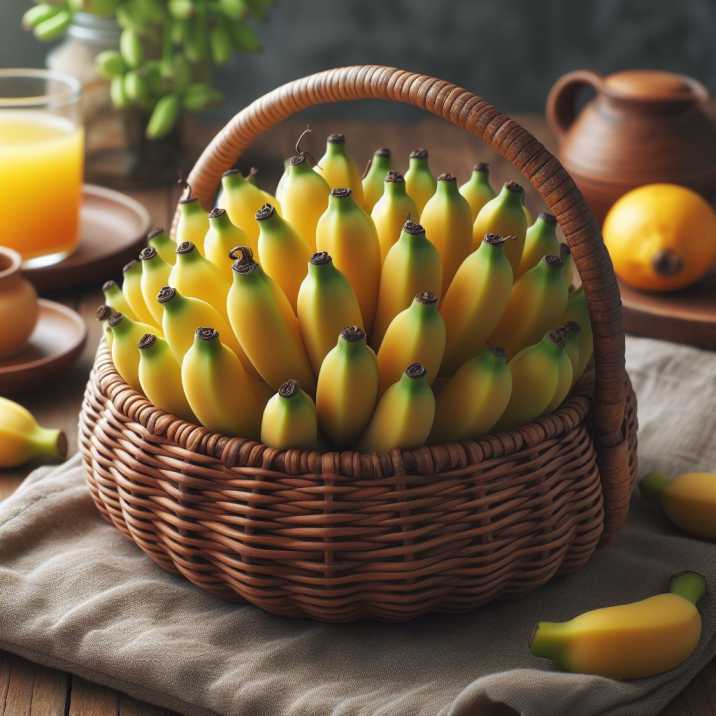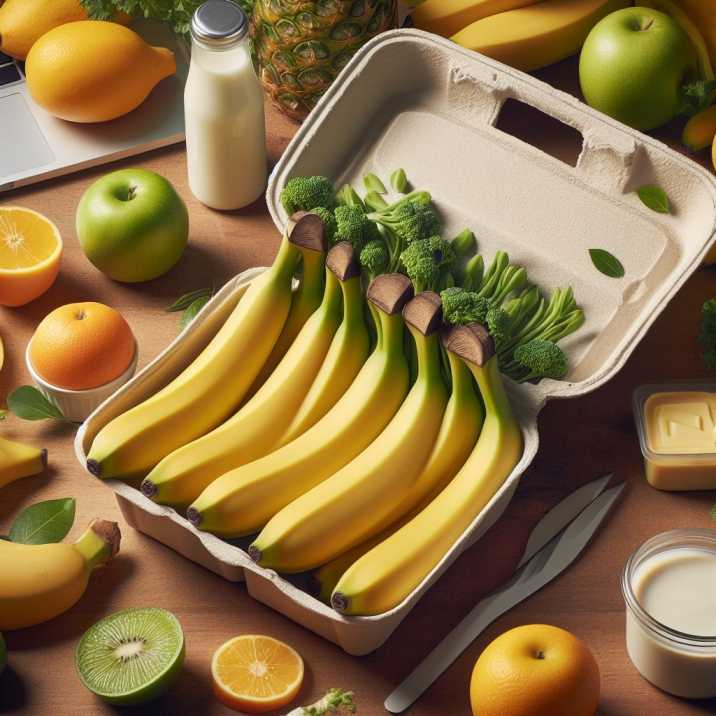Introduction
Table of Contents
Impact of Baby Bananas on Banana Varieties
In the vast world of fruits, bananas stand out not only for their delicious taste and versatility but also for their fascinating role in agricultural innovation. While the banana we commonly enjoy is well-known, there exists a smaller, lesser-known variety that plays a significant role in introducing new banana varieties – the baby banana. This article delves into the intriguing world of baby bananas and how they contribute to the cultivation of diverse banana varieties, revolutionizing the agricultural landscape.
The Role of Baby Bananas in Introducing New Varieties
Baby bananas, also known as finger bananas or ladyfinger bananas, are miniature versions of their larger counterparts. They are typically sweeter and have a distinct flavor profile, making them a favorite among fruit enthusiasts. However, their significance extends beyond their taste; baby bananas serve as essential components in the breeding and cultivation of new banana varieties.
- Genetic Diversity: Baby bananas possess unique genetic traits that make them valuable in breeding programs. Their smaller size allows for easier cultivation and experimentation, making them ideal candidates for cross-breeding with other banana varieties.
- Resilience: Baby bananas exhibit resilience to certain diseases and environmental conditions, making them valuable genetic resources for developing disease-resistant and climate-resilient banana varieties. By incorporating genes from baby bananas into breeding programs, researchers can enhance the overall resilience of banana crops.
- Flavor Profile: The distinct flavor profile of baby bananas, characterized by its sweetness and nuanced taste, serves as inspiration for developing new banana cultivars with desirable flavor characteristics. Breeders often seek to incorporate the unique taste of baby bananas into new varieties to cater to evolving consumer preferences.
- Market Demand: The rising demand for exotic and specialty fruits, including baby bananas, incentivizes growers and researchers to explore new varieties that offer unique flavors, textures, and appearances. Baby bananas play a crucial role in meeting this demand by serving as a foundation for developing novel banana cultivars that appeal to diverse consumer preferences.

Breeding Programs and Innovation
The cultivation of new banana varieties is a complex process that requires meticulous planning, research, and innovation. Baby bananas serve as essential components in breeding programs aimed at developing improved banana cultivars with enhanced traits such as disease resistance, shelf life, and nutritional content.
- Cross-Breeding: Researchers utilize baby bananas as parent plants in cross-breeding experiments to introduce novel genetic traits into banana populations. By selectively breeding baby bananas with desired characteristics, such as flavor, texture, and yield, breeders can create offspring with a diverse range of traits.
- Genetic Modification: In addition to traditional breeding methods, scientists explore genetic modification techniques to introduce specific traits into banana varieties. Baby bananas provide a valuable genetic resource for identifying and isolating genes associated with desirable traits, enabling researchers to develop genetically modified (GM) banana varieties with enhanced properties.
- Field Trials: Once new banana varieties are developed through breeding programs or genetic modification, they undergo rigorous field trials to evaluate their performance under various environmental conditions. Baby bananas serve as reference points during these trials, providing valuable insights into the potential success of new varieties in real-world agricultural settings.
Challenges and Considerations
Despite their significance in banana breeding programs, baby bananas also present challenges and considerations that researchers must address:
- Genetic Diversity: While baby bananas offer genetic diversity, their limited genetic pool compared to other banana varieties necessitates careful management to avoid genetic erosion and maintain biodiversity.
- Market Viability: Developing new banana varieties requires substantial investment in research and development. Breeders must assess the market demand and economic feasibility of new varieties to ensure their commercial viability.
- Regulatory Framework: The introduction of new banana varieties, particularly genetically modified ones, is subject to regulatory scrutiny and approval. Researchers must navigate regulatory frameworks to ensure compliance with safety standards and environmental regulations.
- Consumer Acceptance: Consumer acceptance of new banana varieties, including those derived from baby bananas, depends on factors such as taste, appearance, and perceived benefits. Researchers must consider consumer preferences and market trends when developing and introducing new varieties to ensure their success in the marketplace.

Conclusion
Baby bananas play a pivotal role in introducing new banana varieties by providing valuable genetic resources for breeding programs and inspiring innovation in agriculture. Their unique genetic traits, resilience, and distinct flavor profile contribute to the development of diverse banana cultivars that cater to evolving consumer preferences and address agricultural challenges. As researchers continue to explore the potential of baby bananas in banana breeding and cultivation, they pave the way for a more resilient, sustainable, and diverse banana industry.
FAQs
- What are baby bananas?
Baby bananas, also known as finger bananas or ladyfinger bananas, are miniature versions of traditional bananas with a sweeter flavor profile. - How do baby bananas contribute to banana breeding?
Baby bananas provide valuable genetic diversity and resilience traits for breeding programs aimed at developing new banana varieties with enhanced characteristics. - Are baby bananas genetically modified?
While some research involves genetic modification techniques, not all baby bananas are genetically modified. They also serve as parent plants in traditional breeding methods. - What role do baby bananas play in addressing agricultural challenges?
Baby bananas contribute to the development of disease-resistant and climate-resilient banana varieties, thereby addressing agricultural challenges related to disease outbreaks and climate change. - Can baby bananas be grown commercially?
Yes, baby bananas are grown commercially in certain regions where they are popular among consumers for their unique flavor and appearance. - Are baby bananas nutritionally different from regular bananas?
While baby bananas share similar nutritional profiles with regular bananas, they may vary slightly in terms of size and sugar content. - Do baby bananas have any specific uses in culinary applications?
Baby bananas are often consumed fresh or used in desserts, smoothies, and baked goods due to their small size and sweet flavor.
